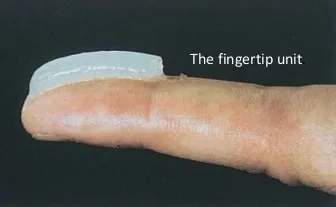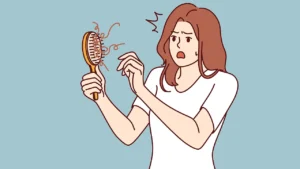Caring for Your Child's Skin During the Summer
As the weather in our country transitions to summer, the air becomes more humid and the days get longer. Parents and children who enjoy outdoor activities may experience skin conditions caused by heat and ultraviolet (UV) radiation. Therefore, our doctor has some tips to share about common summer skin conditions, how to protect your little one from the sun, and advice on choosing the right sunscreen.
Common Summer Skin Conditions in Children
Heat Rash (Miliaria)
Because the sweat ducts of infants and young children are not yet fully developed, if parents dress their child in overly thick clothing, the skin cannot cool down effectively. Blocked sweat ducts cause sweat to become trapped in the skin, resulting in tiny clear blisters or red bumps, which are common on the face, neck, and torso.
Treatment: The rash will usually resolve on its own without treatment. If your child is sweating a lot, you can wipe them down with a damp cloth.
Prevention: Dress your child in weather-appropriate, breathable clothing. Keep them in well-ventilated areas.
Chafing Rash in Skin Folds (Intertrigo)
Chubby or overweight children have more skin folds, leading to frequent skin-on-skin friction. When exposed to hot, humid weather that causes sweating, these folded areas become damp and moist, leading to a red rash. If severe, the child may experience pain, and there is a higher risk of bacterial or fungal infections.
Prevention and Treatment: Dress your child in weather-appropriate, breathable clothing and keep them in well-ventilated areas. Remember to apply talcum powder to help absorb moisture. If the rash is severe, it's recommended to see a pediatrician for an assessment and treatment. Additionally, parents should help manage the child's weight through diet and exercise. If your child is obese, consult a pediatric nutritionist.
Sunburn
UVB radiation causes cell death in the epidermis (the outer layer of skin). If your child plays outdoors in strong sun, their skin can burn. This condition often affects children with fair skin. In mild cases, the skin will turn reddish. In severe cases, the skin can become very red, swollen, painful, or even blister. Symptoms are typically most severe in the first 6-24 hours and will gradually improve within 3-5 days.
Treatment: Apply a cold compress. If severe, you should see a doctor.
Prevention: Have your child wear a hat, clothes that cover their arms and legs, and use an umbrella in the sun. If possible, stay in shaded areas, and don't forget to use sunscreen.
Dermatitis from Jellyfish Stings
Image Caption
Jellyfish venom causes the skin to become swollen, red, and warm, with blisters and a burning pain.
Summer means the sea. If you take your children swimming and one gets stung by a jellyfish, the first aid steps are as follows:
1. Help the child out of the water. Apply vinegar or a baking soda paste to the area stung by the jellyfish and leave it for 30 seconds. If neither is available, rinse with seawater.
Do not use fresh water or alcohol, as this can cause the stingers to release more venom.
2. If you can see stingers in the child's skin, use tweezers, a plastic card, or the dull edge of a knife to gently scrape them from the skin.
3. Take the child to the nearest medical facility for further treatment, so a doctor can assess the symptoms and provide appropriate medication.
Image Caption
-Do not let children swim in areas known for high jellyfish populations.
-Wear long-sleeved and long-legged swimwear.
-Do not let children touch dead jellyfish.
How to Protect Your Child from the Sun
Sunlight contains ultraviolet (UV) radiation, a major factor that can cause a child's skin to become dull, mottled, sunburned, prematurely aged, and most dangerously, can lead to skin cancer. Therefore, protecting your child's skin from the sun is something parents should not overlook. Here are some simple methods:
UVB has a shorter wavelength than UVA, so it affects the epidermis (the outer skin layer), while UVA can penetrate deeper into the dermis.
1. Dress your child in long-sleeved shirts and long pants. Choose tightly woven, dark-colored fabrics to reduce sun penetration. Wear clothing with an Ultraviolet Protection Factor (UPF) rating, which can be found on the label.
|
Type |
UPF | UV Protection Efficiency |
|
Excellent UV Protection |
40-50+ |
Over 97.5% |
|
Very Good UV Protection |
25-35 |
95.9-97.4% |
| Excellent UV Protection | 15-20 |
93.3-95.8% |
2. Always apply a sunscreen that protects against both UVA and UVB before your child goes out in the sun. It can be used for children aged 6 months and older. Check the product packaging for specific age recommendations.
3. For daily activities, use a sunscreen with an SPF of 15+ or higher. However, if you will be outdoors for a long period, choose an SPF of at least 30+. Apply it at least 20 minutes before sun exposure and reapply every 2 hours, or more often if swimming or sweating heavily. Apply a sufficient amount.
4. Have your child wear a wide-brimmed hat with a brim of at least 4 inches, so that it shades the face, neck, and ears. Choose one that does not let sunlight penetrate.
5. Keep your child in the shade, especially during peak sun hours, or use a UV-reflective umbrella. 10 AM to 4 PM is the period with the most intense UVB rays, but UVA rays are present all day long.
6. Have your child wear sunglasses that genuinely protect against both UVA and UVB. Choose a size that fits their face and not toy sunglasses.
Tips for Choosing a Sunscreen
When choosing the right sunscreen, parents should consider several factors. Besides the sunscreen itself, the choice also depends on the child's age and the activities they will be doing.
- Types of Sunscreen Agents: The names of the active ingredients will be listed on the product label.
- Reflective Sunscreens (Physical Sunscreen)
Titanium dioxide and Zinc oxide reflect UV rays without causing a chemical reaction on the skin. They can protect against visible light as well as UVA and UVB rays. Protection is immediate upon application. They are hypoallergenic and can be used on children, but should not be used on infants under 6 months old.
- Absorptive Sunscreens (Chemical Sunscreen)
They absorb UV radiation and convert it into heat. Often, several chemical agents must be combined to provide both UVA and UVB protection. They have a higher potential for allergic reactions and must be applied at least 20 minutes before sun exposure.
- Effectiveness in Protecting Skin from UV Radiation
Choose a sunscreen that can protect against both UVA and UVB by looking for:
- SPF (Sun Protection Factor) for effectiveness in protecting against UVB rays, indicated by the term "SPF" on the packaging.
- PA or UVA-PF (Protection Grade of UVA) for effectiveness in protecting against UVA rays, indicated on the packaging or by looking for this symbol.
The ratio of SPF to UVA-PF should be 3:1.
- Water Resistance
- Water resistant: Effective for 40 minutes in water.
- Very water resistant: Effective for 80 minutes in water.
- Forms of Sunscreen: There are various forms, such as creams, lotions, gels, and sprays. Choose based on your preference for texture, whether thick and sticky or light.
- Non-comedogenic and Fragrance-Free: Look for the terms "Non-comedogenic" and "Perfume-free" or "Fragrance-free" on the packaging.
Protecting Your Baby from the Dangers of the Sun
-Parents should not expose a baby under 6 months of age to direct sunlight. Ensure they wear protective clothing, such as a hat, long-sleeved shirt, and long pants. Try to stay in the shade, and always use an umbrella if you must be in the sun.
-If sunscreen is necessary, choose SPF 15+ or higher and apply it only to small, uncovered areas such as the cheeks and the back of the hands. It can be used once the child is 6 months or older.
-Keep an eye on your baby's condition. If their skin turns red or they become very fussy, it could mean they are starting to get sunburned.
-If your baby has a dry mouth or is urinating less, they may be dehydrated. You should offer them more fluids more frequently and take them back into the shade.
| Water, Swimming Pools, The Sea
ncrease UV reflection by 100% |
Sand, Concrete
Increase UV reflection by 25% |
The Proper Amount of Sunscreen
The proper amount is 2 mg/cm², for example:
A single application of sunscreen for the face and neck requires about 2 finger-lengths of product, which is equal to 1 gram. Therefore, applying sunscreen to the entire body requires about 30-35 grams for adolescents and adults. For children, however, the amount depends on the individual child's body surface area.
If you apply less than half the recommended amount of sunscreen, its UV protection effectiveness is reduced by a factor of four.















